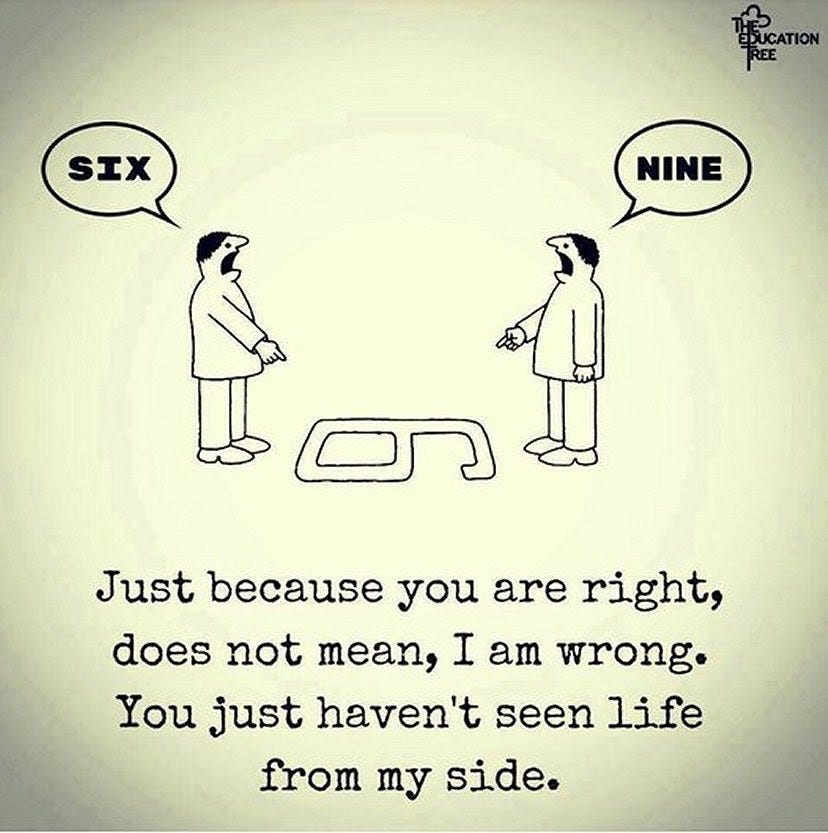Taking the perspective of the other

I haven’t been writing anything on Learning to fly for the last month as I’ve been conflicted internally about sharing it. I wrote a few weeks ago but haven’t posted it for fear of saying something wrong or not palatable or offending someone.
As I was reflecting back on my last post I was reminded of these words from Seth Godin.
“We live in fear. Ancient fears. The fear of isolation, rejection and physical peril.”
This month I really felt these ancient fears and have reflecting deeply to confront and overcome these fears.
Written on November 6th, 2023.
There is so much going on in the world, so much anger everywhere I look. It’s easy for me to say we need to listen to each other, show empathy and compassion while I am typing this in the comfort and safety of my beautiful home office, my pantry and fridge stocked full of food, in a house that is more than adequate for my needs and not having to worry about my (or my family’s) safety (physically or psychologically).
If I was Palestinian currently being bombed or an Israeli who lost a family member during the Hamas attacks or refugee in a Rohingya refugee camp, would I feel the same way? Would I be willing to listen to the other side, the other perspective and feel compassion for the “other”? Would I instead be fueled with anger, hatred and disgust for my enemy, my oppressors.
Of course, there is a power imbalance in the Palestinian/Israeli conflict but none of us really know how we might react in that situation. Would we be able to pause to show compassion and empathy for the other when we’re in survival mode?
That got me thinking. Are we all just in survival mode?
Bob Keegan, prominent researcher in adult development often references that there are two inherit human conditions: to grow and to not die. We want to flourish, to learn, to develop and become the best versions of ourselves but it is in opposition to “not die” and this tension has kept us alive as a species. How can we shift from survival mode to imaging yourself to be in the shoe of the other?
Dr Dan Siegel points out in his research that when we’re under pressure or in a stressful situation, lose our prefrontal cortex functioning (the region of the brain that control executive functioning like making rational decision and emotional regulation) and our perspective narrows. Ultimately, we’re operating with a heightened amygdala (or what I like to call the amygdala hijack) where we are in a flight or fight response mode. When we go to this narrow place, it’s hard to hold all the opposing ideas, positions, and perspectives in mind at the same time and still function effectively.
Origin unknown
It takes awareness and courage to take ourselves to the place where we can understand how the conflict appears to the other person and how that person is reacting emotionally.
I often turn to practices like mindfulness and meditation to first understand my own reactions, the emotions that are surfacing to then acknowledge that the other person involved has a unique perspective. No two people will see a situation or issue in exactly the same way, and we view the world through our lived experiences and past traumas.
What’s happening in Gaza is impacting everyone and it’s not black and white. This binary thinking is hindering progress. My support to for the freedom of the Palestinian people does not mean I condone the actions of Hamas or that I am antisemitic. Until we can allow ourselves to get to know the heart of the other and imagine our self to be in the shoe of the other it’s hard to resolve conflict at any level.





